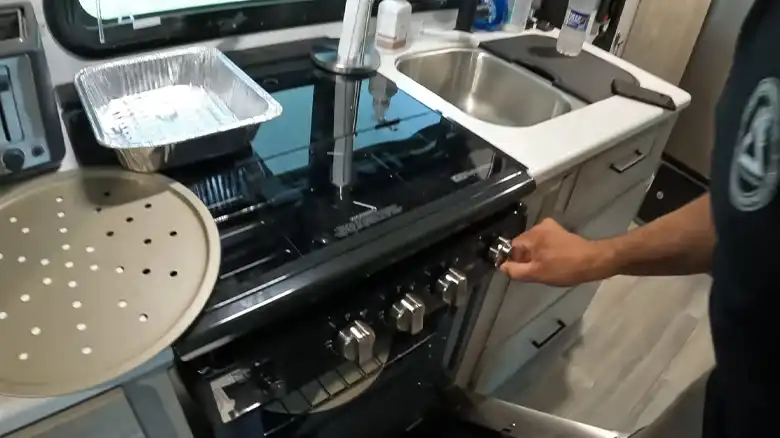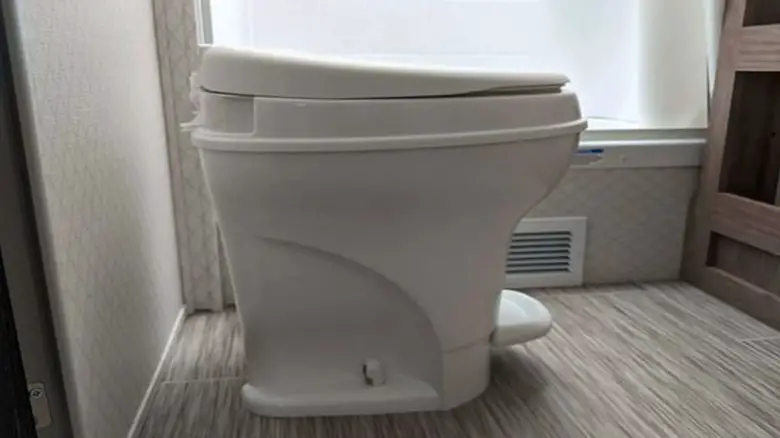So you’ve got an RV, and you’re ready to hit the open road. Great choice! RVs are all about freedom and adventure. But like everything else, they need a little understanding to work best. One part of the RV that often gets folks scratching their heads is the city water connection. Simply put, it’s how you get water directly into your RV when you’re parked somewhere with a water source, like a campsite.
The city water connection is where you hook up a hose to get fresh water into your RV. It sounds simple, right? But there’s a bit more to it. By understanding this system, you’ll have a smoother trip with no water troubles.
In this guide, I’II decode the RV city water connection diagram, making it less of an enigma and more of a handy tool. From understanding its components to troubleshooting common issues, let’s ensure your next RV escapade is well-hydrated and hiccup-free.
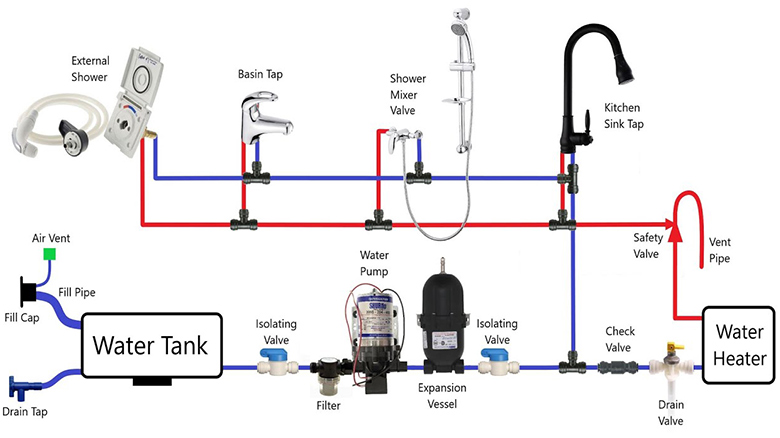
RV City Water Connection Diagram
There’s a basic diagram that shows how an RV’s plumbing is arranged. It helps give you an idea of how everything connects. Remember, every RV might have a slightly different layout based on its design and the company that made it. Some features, like a “bypass,” might not be on all RVs, but RVs often have one. This diagram also shows where to put anti-freeze to keep the system from freezing in cold weather.
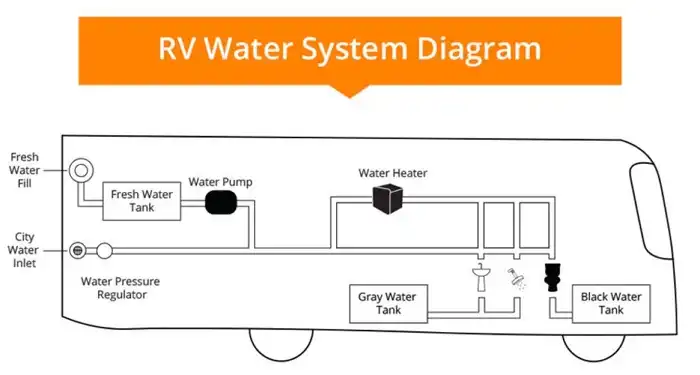
Toilet Plumbing in a RV
The provided diagram offers a straightforward view of the toilet plumbing setup in your Forest River RV.
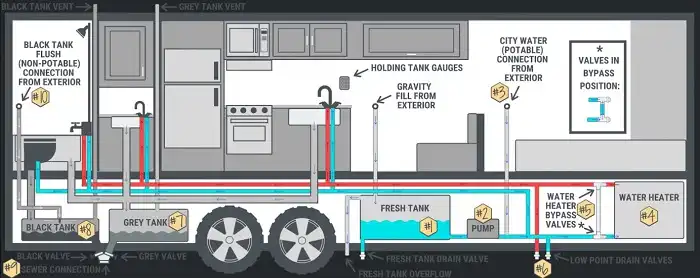
In reality, while the system may be more complex, the foundational concept remains consistent. It’s crucial to understand that the black water tank (for waste) is near the flush system and separate from the freshwater tank.
Taps and shower heads are linked to the greywater tank (for used water) and ultimately drain into the blackwater tank. If your RV features two toilets or other configurations like a cassette toilet, the layout may vary a bit due to extra pipes and parts.
Hot Water System in the RV
With all the intricate details beneath your RV, it’s easy to get overwhelmed. However, it’s crucial for RV owners to be familiar with the hot water system to prevent any issues during colder trips.
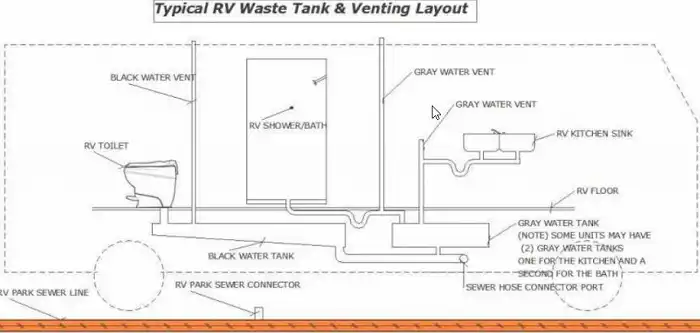
In the diagram, the hot water pipes are highlighted in orange. Observe how water from the freshwater tank goes to the heater and then is sent to the necessary areas. It’s important to note that the hot water pipes skip the toilet and some other non-essential taps where hot water isn’t required.
Furthermore, you can adjust the water’s temperature with thermostat controls, a feature commonly found in today’s RVs, including those made by Forest River.
RV Water System Layout
Each manufacturer has a unique approach to product and equipment design. Like other motorhomes, the Forest River RV also features a fundamental water system concealed beneath its frame.

The provided diagram outlines various components of the Forest River RV’s plumbing and some additional features. If the diagram doesn’t match your specific model, it’s recommended you reach out to the manufacturer for the accurate blueprint.
While the design and general structure remain consistent, it’s noteworthy that Forest River uses exceptionally durable parts, ensuring less frequent need for repairs or replacements on your cherished motorhome.
Understanding the Basics: What’s an RV Water System?
An RV, often called a motorhome, is like a small house on wheels. One key thing it needs is a steady supply of water. The water system in an RV is much like the one in your house. It gets water from a source and moves it to different places, like the toilet and kitchen, through pipes.
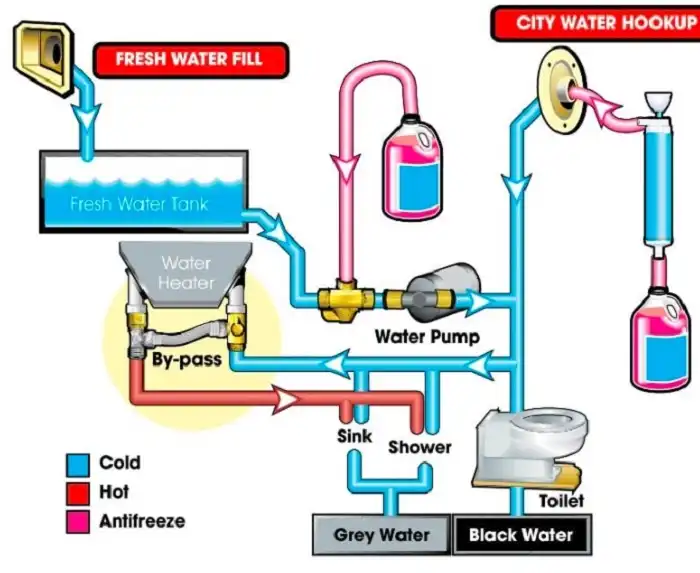
How Does an RV Water System Function?
- Water Source: The RV either gets water from its own tank or directly from an outside line.
- Distribution: Water goes to showers, taps, and other places through pipes. This movement is powered by a water pump, which is very important. Some RVs also have things like heaters to make the water warm.
- Drainage: After use, the water goes to a ‘grey water tank’ or is drained out.
Exploring the Key Components of an RV Water System
Water pump: Pushes the water around. It’s crucial!
Water Tanks: There are three kinds:
- Fresh water: Where new, clean water is stored.
- Grey water: Holds used water.
- Black water: Contains waste from the toilet.
Piping: Tubes that carry water.
Valves: Help control where the water goes.
Extra Features: Some extras might be heaters or water filters.
Conclusion
Looking at these diagrams, you’ll see that RV water systems, like the one in RVs, are pretty straightforward. The way they fit everything in the limited space they have can be tricky. That’s why knowing where everything is can be important. If you need a detailed plan for your specific RV, it’s best to contact the manufacturer.

